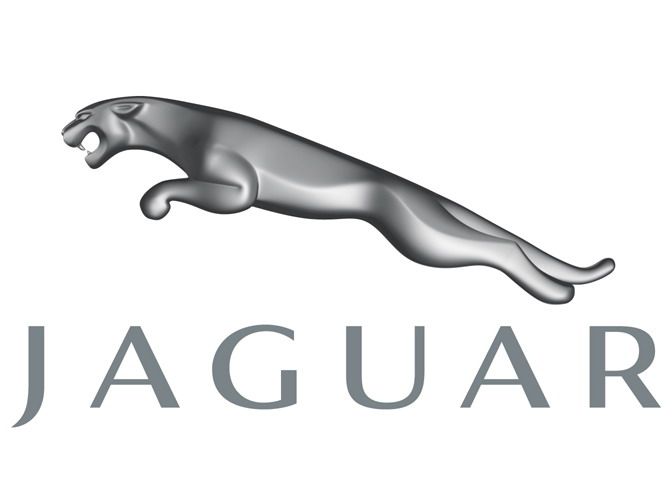It’s a slow news day.
GM and the UAW have settled, along lines pretty much anticipated. Ford has four finalist bidders for Jaguar/Land Rover. Three of them are equity funds. Alonso, it is said, will go to where the money is, rather than where it was, and Jeff Gordon is back in the NASCAR points lead.
Old news.
So, it’s the perfect time for a game of
“What if...?”
What if General Motors bought Jaguar and Land Rover?
At the moment, the only realistic interested buyer is India’s largest conglomerate and second largest car maker: Tata. It has the money in the bank. The other potential buyers are equity groups, who probably don’t have the money and likely can’t get it in the current market, either. (Even the sale of GM’s Allison division for $2.5 billion stuck the bankers with $1 billion of unsold bonds, and Cerberus stuck the bankers with over $10 billion in bonds they’re still trying to unload.)
That Tata wants to buy ought to be a sign that Jaguar just might be a steal. The people that run Tata built it from virtually nothing into an enormous conglomerate doing just about everything. They had some advantages from the Indian government, true enough. But, they also have been remarkably astute in spotting opportunities and have never overpaid.
Jaguar is, in reality, a hell of a deal, if you are the right buyer.
The right buyer for Jaguar is a car company.
Tata wants to buy primarily because it wants Land Rover, which would be a nice fit with the world-wide expansion of Tata’s SUV lines already underway. What, exactly, it would do with Jaguar as a brand, isn’t so obvious. But what it would do with Jaguar as a company can be figured out rather easily.
As a brand, Jaguar isn’t worth much. What positive image it does have is due to the beauty of the XK-E. That’s almost fifty years ago. Other than that, Jaguar’s image is unreliability. That may not be fair. Recent Jaguars have been very reliable.
But they also have looked like Fords. As a name, Jaguar is probably a liability.
But it has magnificent, state-of-the art production facilities – the best Jacques Nasser could spend Ford’s money to buy. Didn’t work out for Ford, because Nasser liked Ford’s money, but ignored its cars. That got Ford where it is today, but it got Jaguar the best facilities money could buy. All of those facilities can be had for a fraction of what it would cost to create them, for fraction of what it did cost to create them, just by buying the company.
You buy Jaguar’s plant and facilities and you get Land Rover, for free.
If you are already a car company, already have products into which this all can be integrated, and can use the Land Rover brand, how do you lose on that deal?
You don’t. That’s why Tata wants to buy.
But it would be an even better deal for GM.
It doesn’t have a top line international SUV, and it could use one. BMW has the 7 Series SUV coming, Audi just introduced theirs, Mercedes already has one. Granted, these are all SUVs, but it wouldn’t take much of a brand extension to put Land Rover in that market, particularly if you could put it on the XF’s platform. God knows, you’ll have the capacity. Ford really screwed up the XF’s styling, turning out a dog that’s never going to sell. But build a crossover on that, and you could make up for it all.
GM has the money. Especially if they didn’t get hosed by the UAW on the VEBA, it should have a chunk handy. Anyway, if it really, really wants to, it could certainly get it. If necessary, it could cut a deal and use Tata’s money. GM needs low priced cars. Tata makes them. Tata needs a European distribution channel. GM has it. The world, and Ford, doesn’t need to know they’ve made a deal until the deal is done. And that deal could just work out as the best deal GM’s ever made.
Wouldn’t be the first time such thinking paid off.
Chrysler bought American Motors, back in the days before Daimler was even a distant cloud on the horizon. Chrysler bought AMC for one reason, and one reason only:
The Brampton, Ontario assembly plant.
That plant, which was almost new, cost more to build than it cost Chrysler to buy AMC five years later.
In the deal, Chrysler got Jeep for free.
That worked out rather well. It’s Jeep that’s floating the company today.
If GM were to buy Jaguar/Land Rover, they would get:
All of those wonderful facilities that Ford paid for.
Land Rover.
Jaguar, which could still be worth something if they could figure out how to make a car to die for.
AND, here’s the kicker.
Ford builds Jaguar’s engines, and isn’t selling the engine building plant as part of the deal, which means that any equity group is still stuck with Ford as their future, UAW included.
But GM could build its own. Better, by far than Tata, which would probably have to outsource that to a consultant company, such as Lotus or Porsche, neither of which have been all that successful at contract jobs.
Ditch the XF – it’s ugly and Jaguars shouldn’t be sedans, anyway. Make Jag a two-seat only brand – remember, the plants going to be primarily building the expanded Land Rover line. Split off all of the Cadillac dealers as stand-alone dealerships, just as did Lexus when it started – but give them the new Jaguar. And the Land Rover. No more Cadillac, Buick, Chevy dealers.
Then build the Cadillac Sixteen.
Yeah, I know it’s not going to happen.
But, what if Rick Wagoner’s reading, now that he’s not otherwise occupied?

